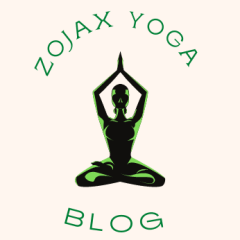What Is Restorative Yoga?
Restorative yoga is a contemplative practice in which we use props such as bolsters, streps, pillows, blankets, blocks, and other similar items to completely rest the body and stretch passively.
Our mind relaxes and de-stresses from daily stress as a result of our body’s deep relaxation.
B.K.S. Iyengar, one of the finest yoga teachers in the last 100 years, created Restorative yoga, or postures.
He was looking for a method to help people who had been sick or injured for a long time, and he wanted to make it easier and faster for them to recover. Restorative yoga uses a lot of props to allow a person to relax completely and thus make each poses passive. The pose is held between 5 and 30 minutes, while the most common duration is 10 minutes.
Restorative yoga is for people with chronic conditions, people recovering from illness, people recovering from injuries in rehabilitation, obese people, people with eating disorders, people who are overworked and don’t have time, athletes on a day off, and for everyone on a weekly relaxation.
5 reasons to include restorative yoga in your weekly schedule:
1. Benefits of deep relaxation and passive stretching
Although active practice is essential, passive stretching and relaxation can also be beneficial.
We are tight, we think about movement, and we are continually tense when we use muscles actively. The entire body is protected and supported with various props during passive stretching, and all muscles can be completely relaxed.
The sensation of a soft support system in the shape of props allows us to relax even more and enter deeper stretching, which is difficult to achieve with active stretching. It is important to understand where and why tensions exist in the body, as well as how to relax them and what happens when they do.
When we become aware of where we are causing stress in our bodies, it will be easier for us to monitor and react in real time in our daily lives, making modest changes that will help us reduce the accumulation of stress and tension.
2. Reduction of body fat
Although it may seem impossible to believe that a reduction in body fat could be achieved without activity and merely passive stretching, a study conducted at the University of California in 2013 proves otherwise.
For 48 weeks, researchers compared women who did restorative yoga to those who did other, more energetic forms of stretching.
Women who performed restorative yoga lost more pounds and subcutaneous fat than those who engaged dynamic stretching, according to the findings.
One theory is that restorative yoga lowers cortisol levels, which have been linked to increasing belly fat.
3. Bringing the nervous system into balance
With the help of restorative yoga, we activate the parasympathetic nervous system and enable the body to reach a state in which renewal and rejuvenation are possible.With the help of restorative yoga, we activate the parasympathetic nervous system and enable the body to reach a state in which renewal and rejuvenation are possible.
Restorative yoga is ideal if you want to start meditating because, in familiar and comfortable positions, you can explore the connection between breath and mind. You may feel emotional, anxious, you may be happy or sad in a certain position, but it is all part of a process in which you release things, emotions, or some old scars through the use of breath in relation to tensions.Satisfaction and fulfillment of primary needs are aided by a sense of security, calm, and well-being for the body and mind. We should not look elsewhere for happiness than within ourselves.
4. Calming the mind
Restorative yoga is a great way to unwind after a long day of work or responsibilities.
Too much mental stimulation often leads to discontent, which we try to remedy by amassing material items that make us happy for a brief moment before the search to fill that gap in ourselves and remove dissatisfaction begins again.Restorative yoga looks like sleep, but can be very demanding. Even though the body is in complete relaxation, it does not mean that our mind will be silent for a second.
5. Recovery from illness
Every human being needs rest, whether it is recovering from some chronic illness, broken bone, sprain or spasm. If you cannot practice a more active form due to the current state of the body, it does not mean that you cannot benefit from the healing abilities of yoga.Restorative yoga allows you to practice postures even when your energy is low and your body is without normal strength.You can strengthen your immune system fight viruses and bacteria by practicing restorative yoga.
Props used for restorative yoga:
Yoga blocks
Wooden yoga block-blocks that are bought in specialized shops can be made of solid cork, bamboo, wood, or foam (length: 23 cm, 15 cm wide, and 10 cm thick). You can make your own block by wrapping a pile of books of the appropriate size in a rubber band or by wrapping it in a pillowcase.
Blosters
Bolsters are long, oval or round solid pillows whose frame dimensions are: 66cm long, 18cm wide, and 8cm high. You can make a bolster yourself by tightly wrapping one or a couple of blankets and folding them to fit this shape, and sofa cushions can also be used for the same purpose.
Blankets and towels
Restorative yoga poses for relaxation and good mood
These simple asanas are suitable for people of all ages and levels of flexibility, and will assist you in stretching, relaxing, and regaining physical and mental balance.
You will have a greater understanding of your body as a result of them, and you will learn to appreciate the little flaws and tensions you feel in your pelvis, hips, neck, and shoulders.

Photo by Vlada Karpovich:
Get down on your knees and sit on your heels.Sit on your heels and get down on your knees.
Lower your torso to the ground by spreading your knees to the side.
If you have stiffness in your shoulders, extend them out in front of you or place them close to your body.
Find out which arm position is the most comfortable for you so you can stay in it for longer. Close your eyes and rest for a few minutes or as long as you feel comfortable in the balasana.
Deeply and calmly inhale.
Feel for any tension in your hips or other regions of your body and concentrate on that area. This pose is ideal for calming the mind and body while also lowering blood pressure and increasing blood flow to the brain. Note: If you have knee problems, place a blanket between your calves and thighs, and if you have ankle problems, place tiny rolled towels beneath your ankles.
This will make your position more comfortable and allow your body to relax to its full potential. Underneath your brow, place a brick (block) or a few folded blankets.
2. Reclined Spinal Twist Pose

Photo by Miriam Alonso:
Pull your connected knees towards your chest while lying on your back.
To obtain a maximum twist in the spine, send your knees to one side and move your head or face to the opposite side.
Make a T shape with your arms by extending them to the sides.
A blanket can be placed between the knees and the sheets for added support.
Completely relax your legs (let your knees fall to the side).
Roll up another blanket and lay it under your shoulder if the opposing shoulder rises too far from the floor.
After 10-15 deep breaths in the closed-eye position, reverse the position by sending your knees (and head) to the opposing side.
3. Sphinx Pose

Image by yanalya on Freepik
Place a blanket beneath your elbows and lie down on your stomach.
Bend your elbows so that your forearms are extended in front of you and your upper arms are perpendicular to the mat.
Keep your shoulders away from your ears and avoid laying your elbows on the blanket.
Extend your neck and let your hair “grow” through your scalp (imagine as if some invisible thread is pulling your head up).
Stretch your feet and press your hips into the mat so that your ribs are on the ground.
Stay in the pose for as long as you feel comfortable.
Then relax totally on the mat by taking a few deep breaths.
This is an excellent position for the lower lumbar spine. You can do a baluster or a child position after this, or curl up on your back, draw your legs to your chest, and gently swing to relax your spine as much as possible.
Note: If you have severe back problems, you should avoid this pose (such as a herniated disc).
4. Legs Up the Wall Pose
Place the short side of the mat against the wall.
Lie down on your back with your legs lifted against the wall, as near to the wall as possible. Place a blanket or a narrower pillow under your lower back if your lumbar back is raised off the floor. With your palms facing up, place your hands on your stomach or next to your torso. Relax your shoulders, abdomen, legs, and feet by closing your eyes. Put on an eye pad if you want to relax even more profoundly.
You can stay in this relaxing pose for as long as you wish.
Option: You can spread your feet on the wall wider than the breadth of your hips if you choose.
5. Reclining Bound Angle Pose

Image by Drazen Zigic on Freepik
Lie down on a mat (put a blanket under your head and back), bend your knees and send them to the side, and join your feet.
One block should be placed beneath each knee (or a high pillow if your hips are not open enough).
Lay one palm on your lower belly and the other on your heart area, or place both palms on your groin.
Close your eyes and relax totally in this comfortable position.
This asana helps with menstruation as well as stretching the inside side of the thighs, hips, and groin.
Analyze the tensions in your body
Restorative yoga can undoubtedly assist you in determining which portions of your body gather the greatest tension as a result of stress.
To better release stress and let the body to relax, use all of these asanas for just that—explore where you feel the most tension in the body and focus your attention and breath on that portion of the body.
Benefits of restorative yoga:
• enables deep relaxation and calms the mind
• balances the nervous system
• stretches muscles and increases flexibility
• lowers blood pressure and reduces heart rate
• helps to get to know your body better
• reduces subcutaneous adipose tissue
• accelerates recovery after illness
• boosts the immune system
• helps heal emotional wounds action difficulties.
Learn for more: What Is Restorative Yoga?





